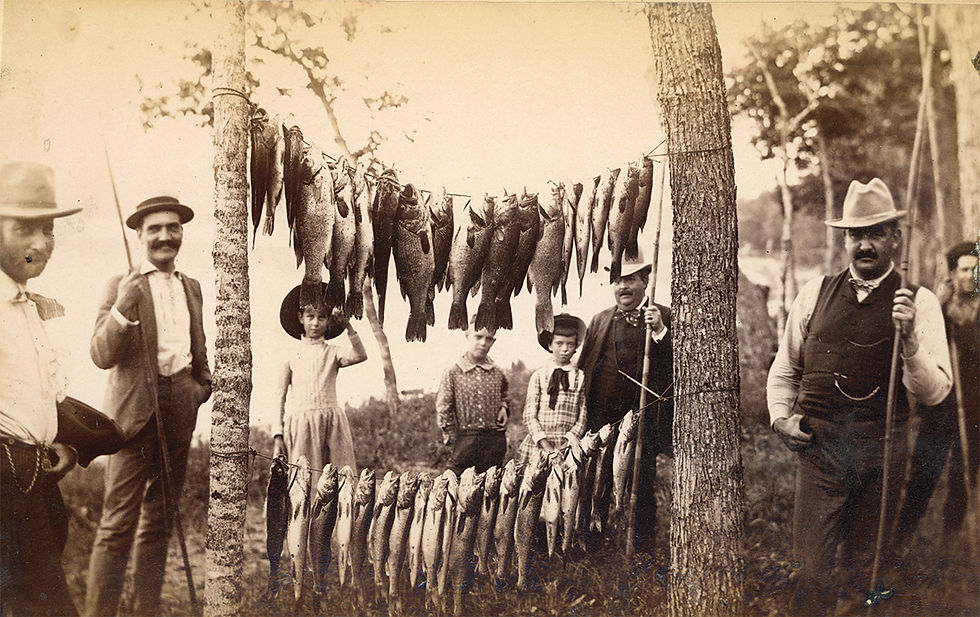A fun family tree
- Sr Perspective

- Dec 30, 2013
- 4 min read
Olson learns new details about descendants

Roberta Olson
Roberta Olson proudly displays a plaque in her Sauk Centre home verifying that she is a descendant of people who sailed on the Mayflower. Their names, along with those of some of their children, are listed on a plaque outside the inn in Plymouth, England, where the passengers spent their last night before embarking to the New World on Sept. 15, 1620.
If any of this sounds familiar, it’s because this information appeared in the October 2011 edition of Sr. Perspective. But now the names and details have changed, because Roberta is also descended from someone else who made the same voyage. The first ancestor she uncovered was Stephen Hopkins, whose colorful history included daring sea voyages, mutiny, capture, and a shipwreck that Shakespeare may have used as inspiration for The Tempest. About a year later, the cousin who told Roberta about Hopkins “offhandedly remarked, ‘Oh, by the way, we have a double connection.’ Which was fine, because there was so much work and verification to do for the first one.”
That second connection is William Brewster, whose life isn’t quite so dramatic as Hopkins’, but makes for a rousing good story as well, involving government persecution and a stubborn insistence on publishing what he perceived as the truth, even when he had to flee to Holland and, eventually, to the wilderness that was America.
Brewster, who was a printer and writer, was born in Scrooby, Nottinghamshire, England around 1566. He studied at Cambridge, where he probably first adopted his Puritan views. He entered the service of William Davison, a court officer who became involved in political intrigue, invoked the wrath of Queen Elizabeth I, and spent some time in prison. With a mentor like that and a printing press at his disposal, it was inevitable that Brewster would involve himself in intrigue as well, printing pamphlets in favor of separatism from the Anglican Church. He ended up being the second-highest ranking layperson in the new church, the members of which never did call themselves “Puritans” but “Separatists” and eventually “The Pilgrim Church.”
Brewster was forced to take his family and flee to Pieterskirk, Holland, where he had spent some time previously, picking up revolutionary ideas. He taught English, set up as a printer, and turned out religious pamphlets and books. He sent them to England, where they were banned. Eventually he was threatened with arrest and forced into hiding for a year. At last, Roberta says, “He left town abruptly on the Mayflower.”
With Brewster were his wife, Mary, two of their sons, and two boys from the Separatist congregation whose mother was in a spot of trouble. These boys were placed as indentured servants. Three more Brewster children would join the family later. The plaque at Plymouth identifies the passengers as “William Brewster of Scrooby, Nottinghamshire, Mary his wife, Love and Wrestling his sons, Richard Moore, a boy that was put to him, and another of his brothers.”
The voyage was a terrible one, plagued with strong winds, a leaking ship, and unsanitary conditions. Two people died on board, and more than half their number did also in the harsh New England winter when they finally landed. Brewster, however, remained healthy, ministering to the sick and dying. He was an advisor to William Bradford, head of the Plymouth colony, and, as the only university-educated member, was their religious leader until an ordained pastor arrived. He was given land on islands, still called Great, Little, Middle and Outer Brewster. In 1632 he was granted land in Duxbury, near Plymouth, and moved there to farm. He died in April 1664.
The Mayflower organization is meticulous when it comes to tracing ancestry, demanding verification every step of the way. Roberta had to prove the following: William and Mary Brewster’s daughter, Patience, married Thomas Prence. Their daughter, Mercy, married John Freeman. Their daughter, Hannah, married John Mayo. (It is not known if they were to beget the famous Mayo Brothers. Perhaps a subject for Roberta’s future research!)

William Brewster
The Mayos’ daughter, Mercy, who was William Brewster’s great-great-granddaughter, married Nathaniel Hopkins, who was Steven Hopkins’ great-grandson, thus linking the two families. Their son, Theophilus, married Tabitha Kenrick. Their son, also named Theophilus, was a doctor who married four times, produced 17 children, and moved with wife Martha to Wisconsin, where his and Martha’s son, Simeon, married Mehitable Hardy. Their daughter, Sylvina, married William Harrison Shambeau. Their son, Ambrose, carried on a family tradition by starting a newspaper in Ogdensburg, Wis., in 1873, when he was 21 years old. Roberta has the only remaining copy.
Ambrose and his wife, Carrie Fenno, had a daughter Mary Belle, who married Erick Peterson. Their daughter, Beverly, married Edmund Malcheski and produced Roberta, also a writer and editor. Perhaps someone reading this will recognize a name and be inspired to try tracing their Mayflower, or at least their family, roots.
Roberta said, “I’ve always been into history; and family history has been my thing since I was a kid.” She used to retrieve and keep the family birth announcements her mother discarded. Now she is busy putting together books about each of her illustrious ancestors and trying to solve a family mystery, the details of which she doesn’t want to reveal just yet.
“The books are registered in Plymouth Colony and on the Internet, and in the towns concerned with it. In 50 years when somebody gets the urge to find out about their family, it will be accessible.”




Comments